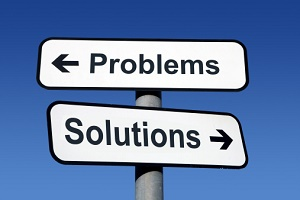ATD Blog
Redefining Your Customer's Problem
Wed May 27 2015

When defining your customer’s problem, the real mission is to redefine that problem. Ultimately, if you want to win the business, your solution has to solve the true, heart-of-the-matter challenge your customer is facing. And to get there, you’ll need some creative thinking.
“Your approach needs to seek the correct problem,” says Brian Stone, associate professor at Ohio State University and principal partner in the international consultancy Latitude 40 Design. Making sure you’re creating a solution for the correct problem helps to differentiate you from competitors who, as Stone says, are “trying to solve the same problem using the same tools, and leveraging the same resources.”
For example, a product called Clocky is an alarm clock with two wheels on each side. When the alarm goes off, Clocky races off of your furniture and runs around your room avoiding you. You can’t just reach over and turn off the alarm . You literally have to get out of bed and chase it to turn it off. Clocky solves a different problem than traditional alarm clocks: The issue has never really been waking up, it’s getting out of bed. Clocky looked at the problem a different way.
Consider the following strategies you can use to look at your customer’s problem in a different way:
State your customer’s problem in simple terms.
Position yourself in his shoes to better understand his problems.
Ask better questions about his problems and concerns.
Redefine your customer’s problem with a deeper level of understanding of their financial, market, product, and resources goals.
When your customer tells you they’re trying to solve one problem, think about what other elements might be behind that problem. It seems like your customer is asking for price considerations when they say, “How can we cut the cost of this product?” But you should dig deeper to discern whether your customer is having larger issues and to understand what’s really important in a solution. Structure your questions around the following four areas:
Financial: What is your customer trying to accomplish from a financial perspective? What are the challenges around your customer’s revenue, profit, cost, or share?
Market or User: What is your customer trying to accomplish from a market or user perspective? What are the challenges around who your customer serves or who uses their solution?
Product or Application: What is your customer trying to accomplish from a product or application perspective? What are the challenges around what your customer offers or the application for their users?
Resources: What is your customer trying to accomplish from a resources perspective, including human resources? What are the challenges around resources that enable them to accomplish their goals?
You may end up confirming and validating the original customer problem. Or, you may find that you can understand the problem in an entirely new light and offer a better, differentiated solution. By thinking of your customer’s challenges in a broader context you open up new possibilities for a solution.
Share your experiences with defining or uncovering customer problems in the Comments below.
You've Reached ATD Member-only Content
Become an ATD member to continue
Already a member?Sign In
